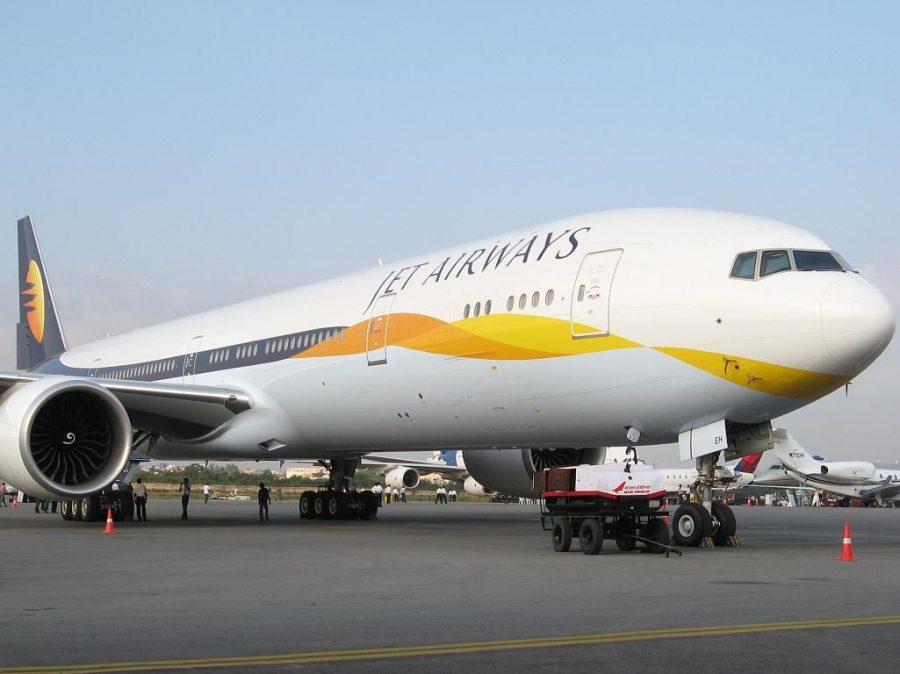
Jet Airways fiasco: Union government equally culpable

The question that comes to mind after Jet Airways temporarily shut down its operations on Wednesday is how soon will the airline be able to restart its operations or whether it will take a much longer time than anticipated.
The grounding of Jet Airways should go down in the history of Indian aviation as one of the biggest tragedies that it has seen so far. Not even the death of Kingfisher Airlines was as serious as the fate which befell Jet. Unfortunately, the country is turning out to be a graveyard for airlines with at least two big carriers within a span of seven years folding up apart from the smaller ones like Air Costa and Air Pegasus.
Even as Jet was being squeezed out from all the sides, the government remained a bystander as it did not want to intervene fearing that any move to help the airline will backfire on them. In an election year, playing safe can save a lot of trouble but that didn’t help Jet from going down.
With just seven aircraft in its fleet and the lenders unwilling to pay more, the airline management had no other option but to suspend the operations. As of now, the airline has a debt of over $1 billion and no money in the bank to pay salaries to the pilots or to the lessors of the aircraft.
“Late last night, Jet Airways was informed by the State Bank of India (SBI), on behalf of the consortium of Indian lenders, that they are unable to consider its request for critical interim funding.
Since no emergency funding from the lenders or any other source is forthcoming, the airline will not be able to pay for fuel or other critical services to keep the operations going. Consequently, with immediate effect, Jet Airways is compelled to cancel all its international and domestic flights. The last flight will operate today (Wednesday),” a statement from the airline said.
The airline’s problems are those of the industry as well. Being a full service carrier, Jet’s business model didn’t allow it to compete with the low-cost carriers though both of them competed for the same passengers and at more or less similar air fares. Unable to compete at such low fares, Jet started bleeding and started borrowing from the lenders to keep running its operations. For the third quarter of 2018-19, the airline’s losses were ₹ 588 crore with a funding gap of ₹8,500 crore.
The lenders have managed to get the chairman of the airline, Naresh Goyal to step down from the board and sought bids from those interested in the running of the airline. While Air Canda and TPG among the others are learnt to have bid for the airline, it remains to be seen whether any of them would be keen to run an airline with such huge debt and about 20,000 employees on board.
The paradox facing the industry are many. To woo passengers, the airlines lowered the fares which led to an increase in the number of people flying but once Jet began to falter, the number of available seats went down leading to an increase in airfares. This is bound to result in a fall in passenger numbers which will again affect the airlines’ profitability.
Some of the analysts have said that the government should not try to rescue airlines and allow them to fall as there will be others who will fill up the space left by those which have folded up. But no airline will dare to enter an industry which is highly regulated by the government.
The government needs to intervene immediately to revive the sector. Firstly, it should waive off huge taxes on aviation turbine fuel, allow airports to charge lower parking and landing fee for low-cost airlines at major airports as well. The ill-conceived UDAAN scheme which was formed to boost regional connectivity has found few takers. The government should scrap the scheme and allow secondary airports to be developed around the main international airports and offer concessions and incentives to low-cost airlines. It should also bring in professionals to man key posts in the aviation ministry, especially in the regulator, DGCA.
If the government does not immediately intervene to rescue the industry, it is just a matter of time before another airline goes belly up.

